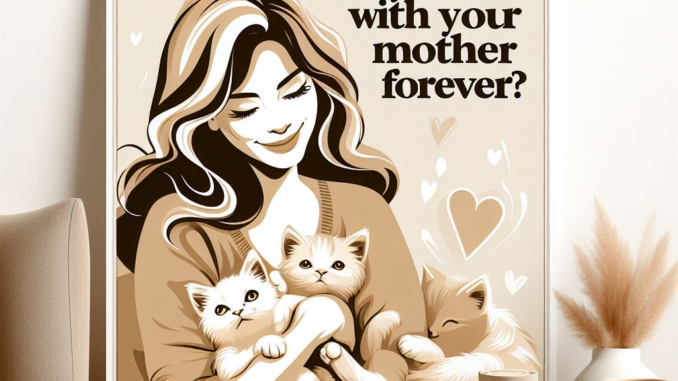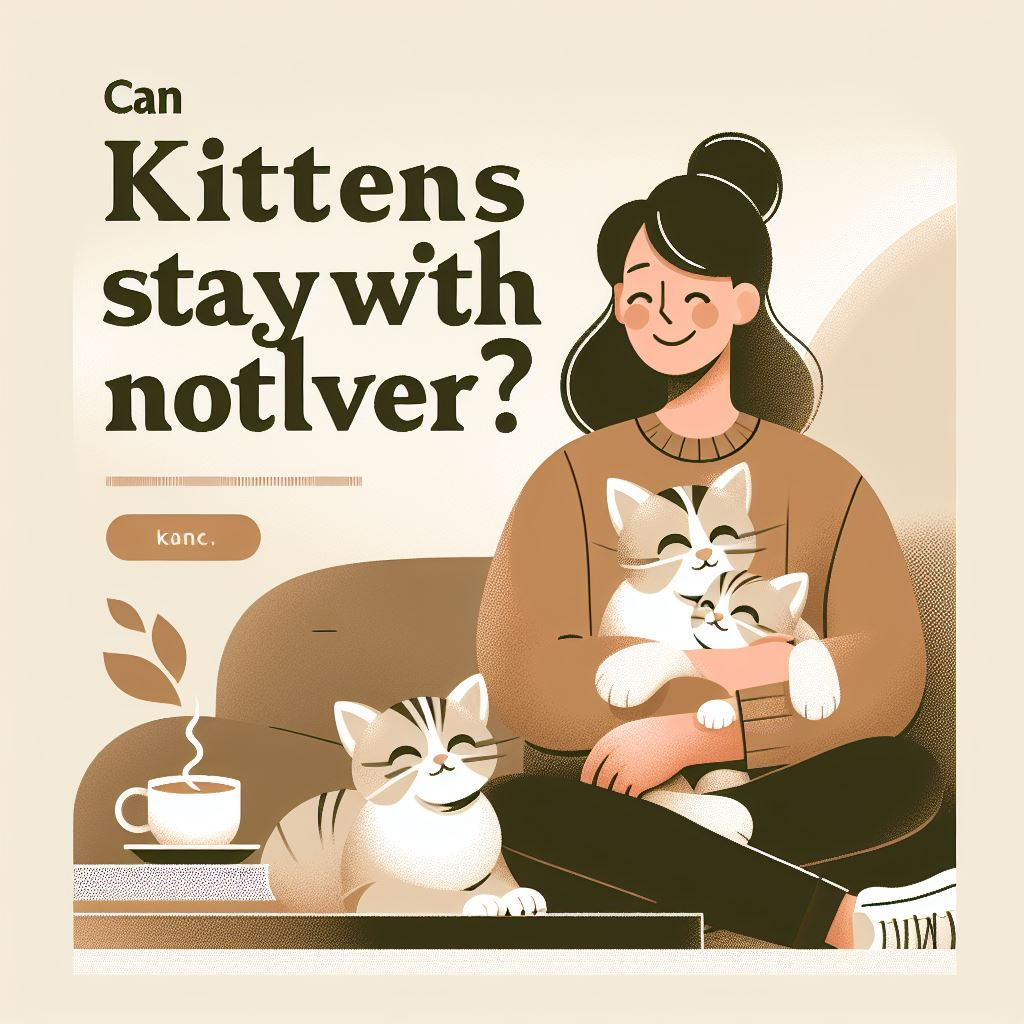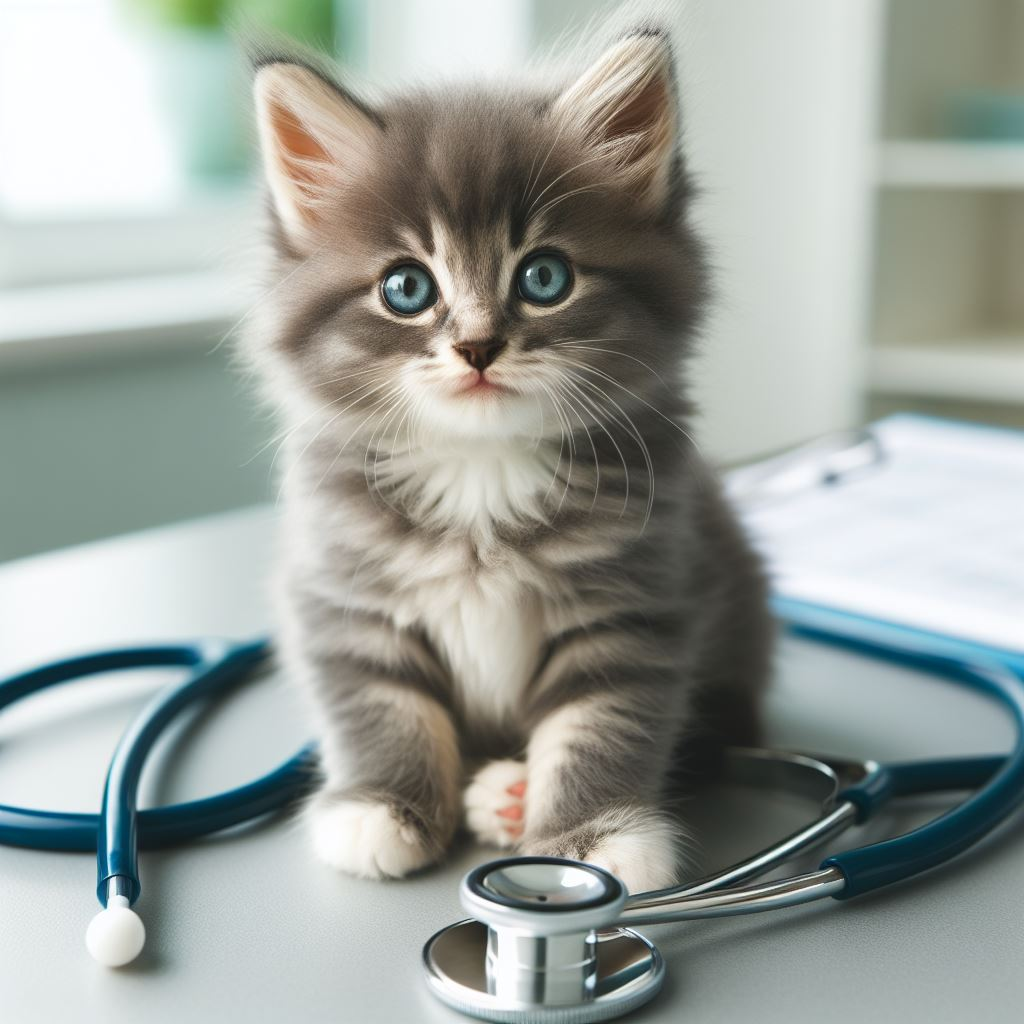
Can Kittens Stay with Their Mother Forever?
When it comes to the adorable world of kittens, one question often tugs at the heartstrings of cat lovers: can kittens stay with their mothers forever? It’s a thought filled with warmth and affection, imagining a lifetime bond between a mother and her babies. But what does animal behavior tell us about this endearing query? As your resident cat enthusiast and pet care writer, let me walk you through the highlights of this heartwarming topic!
Those Early Weeks: Nurturing Essential Bonds

In those precious early weeks of life, the bond between kittens and mama cats is absolutely vital. As any kitten owner knows, it’s a special period bursting with nurturing, growth, and discovery. Mama Cat doesn’t just keep her babies full of milk; she imparts core survival skills and social know-how. Kittens carefully study their movements, learn how to communicate with fellow felines, play with appropriate bite control, and even groom themselves diligently!
But as the kittens grow, their little personalities blossom and independent streaks emerge. This is perfectly healthy and normal kitten behavior! By 8-12 weeks old, most kittens are mentally and physically ready to venture out more on their own. Separating from mama is not just normal – it’s essential for their development into well-adjusted adult cats.
The Significance of Independence in Maturing Kitties
Growing into their own is a vital milestone in every kitten’s life cycle. Cats tend to be solitary creatures by nature, and this drift towards independence starts kicking in as they mature. Kittens form incredibly strong attachments with their doting mothers initially. But those bonds are designed to eventually change and loosen up. The weaning process marks the start as little ones transition from nursing to regular chow.
Weaning isn’t just a dietary shift – it actually lays the foundation for self-sufficient lives someday soon! An essential facet of development is learning to interact with all sorts of new beings and environments beyond their mothers – whether that’s kids, other adult cats, or even dogs. Sticking rigidly to momcat long-term could potentially restrict that crucial social growth.
Myths vs. Feline Reality: Separating Fact from Fiction
You may have heard well-meaning theories that keeping kittens permanently glued to their mothers is best for their long-term mental health. However, experts in cat behavior often debunk this pervasive myth. No doubt – early bonds between kitten and mom lay vital groundwork. But clinging to that connection too persistently can actually breed problematic behavior, from separation anxiety to poor environmental adaptation.
It’s also true that mother cats innately start to nudge their kittens away, little by little, as they mature. This is her natural way of spurring independence – respecting those cues is essential for both parties’ wellness.
Responsible Rehoming: Taking a Balanced Approach
When the bittersweet time comes to place kittens in new homes, a thoughtful strategy is crucial. That means doublechecking they are old enough – at bare minimum 8 weeks – and socially and physically prepared to leave momcat. With sensitive handling, the transition can be eased beautifully for all involved.
We must also consider Mama Cat’s own welfare after her babies depart. Often, a period of rest and recovery, free of new pregnancies, is best following her selfless mothering duties – especially if she has endured multiple litters. Getting her spayed is also vital for preventing future unplanned litter and supporting her health long-term.
In this first half, we have unpacked those early bonds between mothers and kittens, the importance of their eventual separation, and some myths surrounding this relinquishing. But what comes next? How do mamas and babies adapt post-split, and what’s the human role? Stick with me for Part Two – where we dive deeper into the next chapter of this journey towards independence!
Adjusting to New Lives: Post-Separation Shifts
Once kittens venture out into the world, both parties navigate a transition. For the kittens, it’s an adventure filled with exploration, new connections, and adapting to their adoptive homes. They have the chance to bond with kind kids, other pets, and more. This stretch is pivotal for social skills and development. Meanwhile, Mama Cat may search anxiously for her brood at first. But soon, instincts lead her back to familiar patterns minus the kittens.
Human Assistance: Smoothing Out Transitions
Human caretakers have monumental roles supporting this adjustment phase! Ensuring kittens are matched with safe, loving forever homes is paramount – spaces where they’ll receive proper socialization and care. For recently emptied mama cats, offering stability and TLC helps greatly; extra playtime, affection, and low-key engagement enhances her emotional wellness.
Close monitoring of both parties for signs of stress or declining health is wise during this stretch. Any red flags should be promptly addressed with your vet.
Longterm Impacts: Early Experiences Matter
Those early kitten experiences – including mama time and weaning transitions – wield lasting pawprints. Well-socialized kittens with extensive human/pet interaction tend to grow into friendly, confident cats. Meanwhile, too-early separation or traumatic weaning could manifest later as anxiety, acting out, or struggles adapting.
For post-kittens queens entering a new chapter, proper nutrition, medical care and lots of love facilitate recovery. If she’s unowned, securing safe harbor via TNR programs is key before resuming the stray life.
Forging Lasting Bonds: Families’ Roles
Loving forever families profoundly impact kittens’ destinies. Providing enrichment, playtime, training – and of course, top-notch veterinary care – is integral for responsible cat parenting. Exposing kittens early (and positively!) to other pets/people and creating safe spaces for them to roam and learn all help socialization and inter-species bonds thrive.
Understanding adopted kittens’ backstories, respecting their unique needs, and practicing patience set the stage for strong lifelong bonds between pets and humans.
In Closing: A Necessary Path to Maturity
While kittens can’t remain permanently glued to their tomcat, their eventual separation represents a necessary, natural step toward independence. This milestone allows them to cultivate identities, pick up essential life abilities, and forge new connections. For post-kittens queens, this new chapter brings readjustment but ultimately, resumption of her normal rhythms.
Humans play a monumental role in supporting healthy transitions for mamas and babies. Guiding sensitive rehoming, providing enriching adoptive homes, overseeing proper socialization – our care and compassion greatly impact their wellness and futures. By respecting the natural cadence of feline family dynamics, we can nurture wonderful lives for these beloved creatures.


Leave a Reply